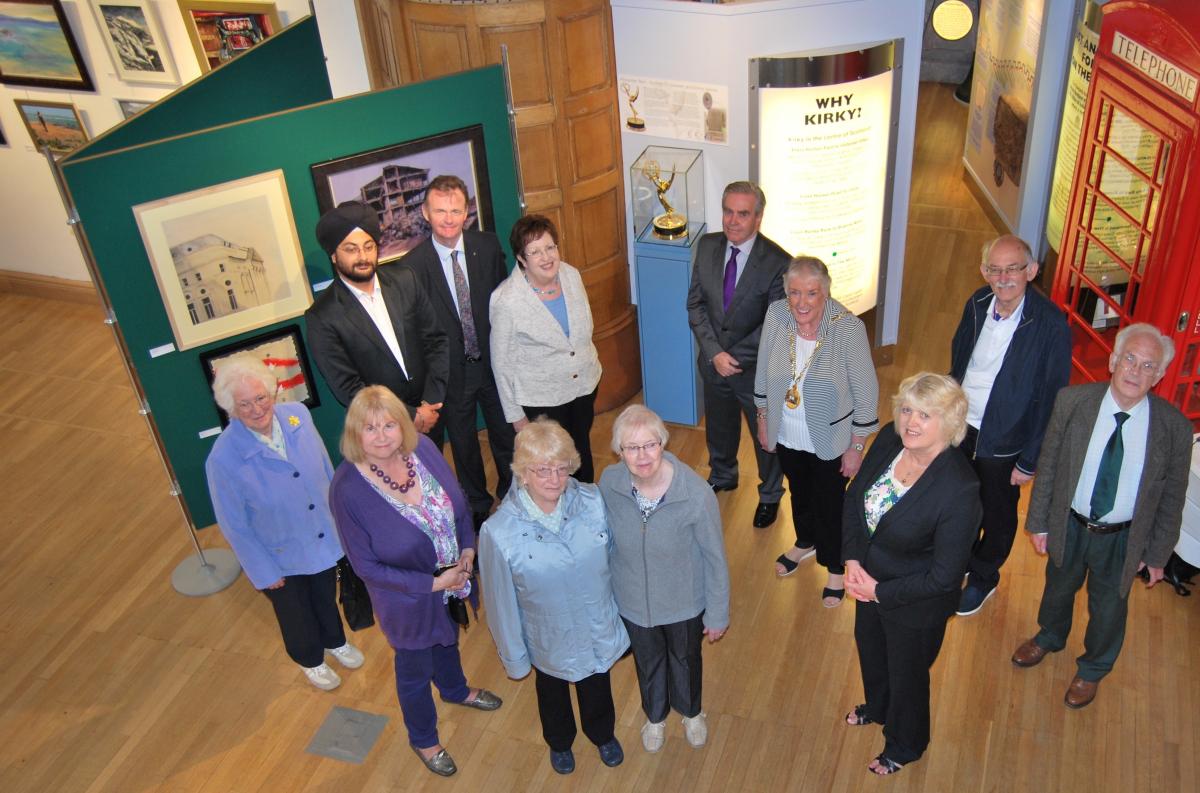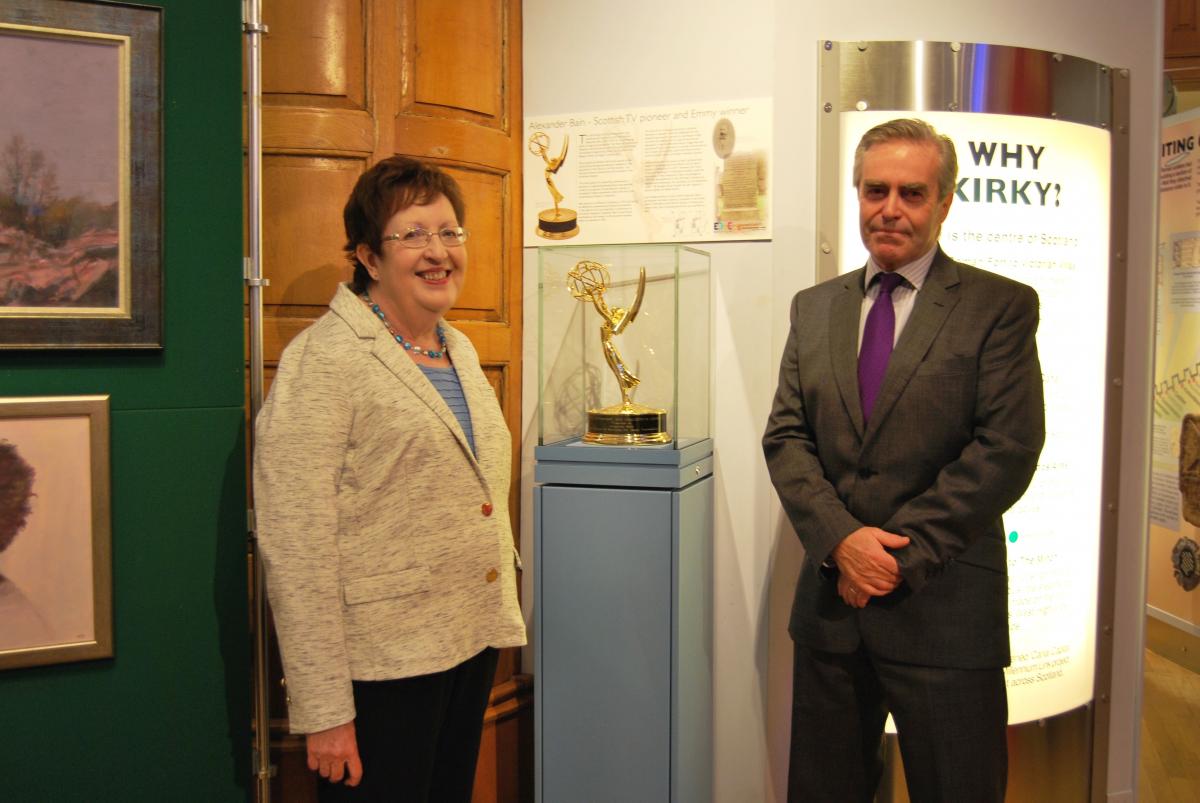 A prestigious Emmy award which was awarded to a little known Scottish inventor 130 years after his death for his pioneering work in image transmission is now on public display in East Dunbartonshire.
A prestigious Emmy award which was awarded to a little known Scottish inventor 130 years after his death for his pioneering work in image transmission is now on public display in East Dunbartonshire.
The National Academy of Television Arts & Sciences (NATAS) decided to posthumously honour Alexander Bain (1810-1877), who died and is buried in Kirkintilloch, for his outstanding achievement in technical or engineering development.
Many people are familiar with Emmy awards as the annual prizes recognising television excellence - the equivalent of the Oscars in the film industry- but they also honour development and innovation in the broadcast industry.
Bain's Technology and Engineering Emmy, awarded at the 67th Annual Technology & Engineering Emmy Awards in the Bellagio Hotel in Las Vegas in January, was given in recognition of inventing the concept of scanning for image transmission, said to be one of the fundamental principles of television.
East Dunbartonshire Council, who maintain Bain's gravestone in the Old Aisle Cemetery in Kirkintilloch, were chosen as custodian of the award. The Emmy has now been given pride of place in a new display at Kirkintilloch's Auld Kirk Museum.
 Council Leader Rhondda Geekie officially unveiled the Emmy at a special ceremony on Thursday. Councillor Geekie said, "It was a huge honour - and quite a surprise - for the Council to be asked to be custodians of the Emmy Award.
Council Leader Rhondda Geekie officially unveiled the Emmy at a special ceremony on Thursday. Councillor Geekie said, "It was a huge honour - and quite a surprise - for the Council to be asked to be custodians of the Emmy Award.
"It was particularly pleasing that some members of the Kirkintilloch and District Society of Antiquaries could join us at the official unveiling as they played a vital role in ensuring the Emmy was awarded to Bain.
"Our residents are rightly proud of Alexander Bain and the Emmy's arrival in East Dunbartonshire is sure to generate a lot of excitement in the local community and beyond.
"Bain's achievements have gone relatively unnoticed in the 138 years since his death however my predecessors in the Town Council of the Burgh of Kirkintilloch publicly noted the importance of his inventions and pledged in 1959 that his headstone be maintained in perpetuity.
"It is important that we now play our part in helping to bring his innovative work to the attention of a new generation of budding young engineers and help inspire them.
"I'm delighted that it will now be on public display so that everyone can have the opportunity to see this prestigious award and learn more about the work of Bain."
Bain was born at Watten in Caithness in 1810 and during his lifetime his achievements included the invention of the electric clock and important contributions to the electric telegraph. However, Bain is now known worldwide as the inventor of the facsimile machine, which he patented in 1843.
This early form of image transmission combined elements of electric clocks and telegraphs but the breakthrough was the concept of scanning an image and then transmitting it so it could be reproduced elsewhere. It was the first time that an image was ever transmitted from one location to another and introduced the concepts of scan lines, pixels and frame and line synchronisation used in all modern television systems.
Kirkintilloch and District Society of Antiquaries President, Ivan Ruddock, helped Councillor Geekie unveil the Emmy. He wrote an article in 2012 exploring the link between Bain and the fundamentals of television which played a key part in The National Academy of Television Arts & Sciences' decision to award the Emmy to Bain.
Dr Ruddock added, "Prior to the award of the Emmy, Alexander Bain was a virtually forgotten pioneer of the electric telegraph, the electric clock and the fax machine. He is now recognised for inventing the fundamental principles of image transmission and ultimately television that we still utilise and rely on today."
Follow us on Twitter @EDCouncil or like us at www.facebook.com/edunbartonshirecouncil